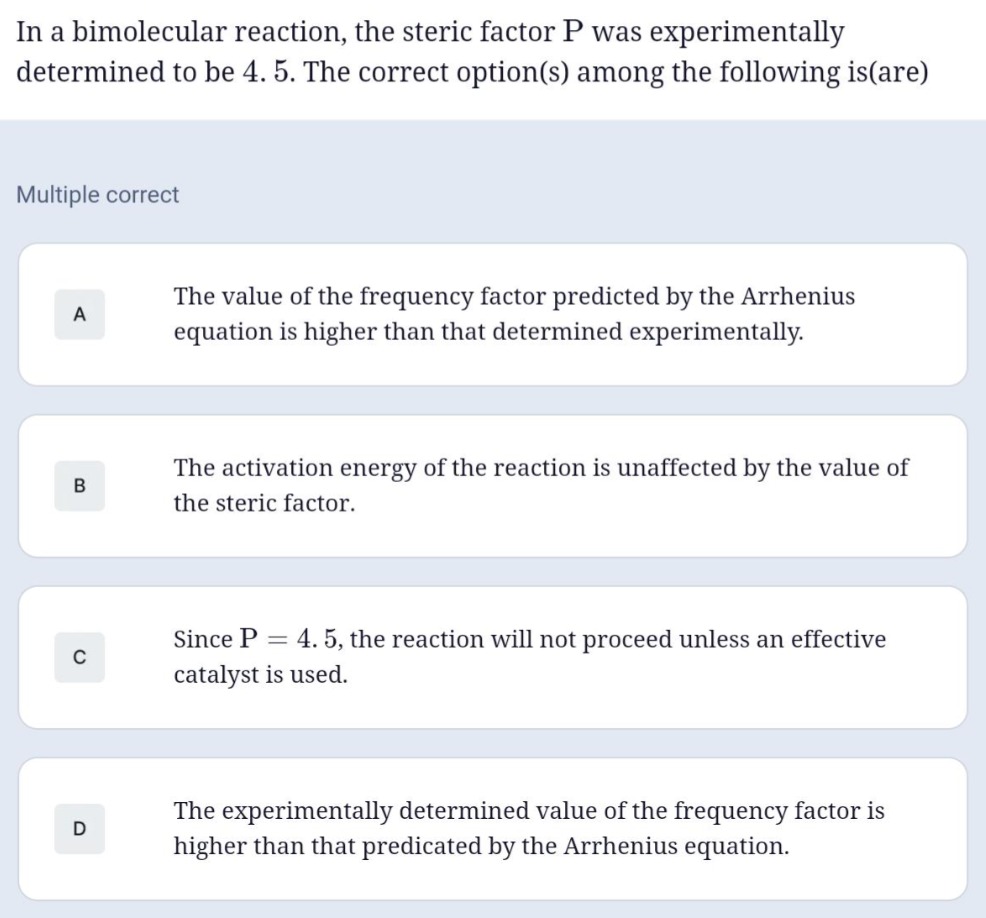Question
Question: In a bimolecular reaction, the steric factor P was experimentally determined to be 4. 5. The correct...
In a bimolecular reaction, the steric factor P was experimentally determined to be 4. 5. The correct option(s) among the following is(are)

A
The value of the frequency factor predicted by the Arrhenius equation is higher than that determined experimentally.
B
The activation energy of the reaction is unaffected by the value of the steric factor.
C
Since P = 4.5, the reaction will not proceed unless an effective catalyst is used.
D
The experimentally determined value of the frequency factor is higher than that predicated by the Arrhenius equation.
Answer
B and D
Explanation
Solution
In collision theory, the rate constant is given by
k=PZexp(−RTEa)and compared with the Arrhenius form
k=Aexp(−RTEa)we have
A=PZ.Since the steric factor P=4.5 (i.e. P>1), it implies:
- A (experimentally determined) is 4.5 times larger than the collision frequency Z (which is the value assumed if P=1). Therefore, the experimentally determined frequency factor is higher than the one predicted by the ideal (or “predicated”) Arrhenius expression when assuming P=1.
- The activation energy Ea comes solely from the energy profile of the reaction and remains unaffected by P.
